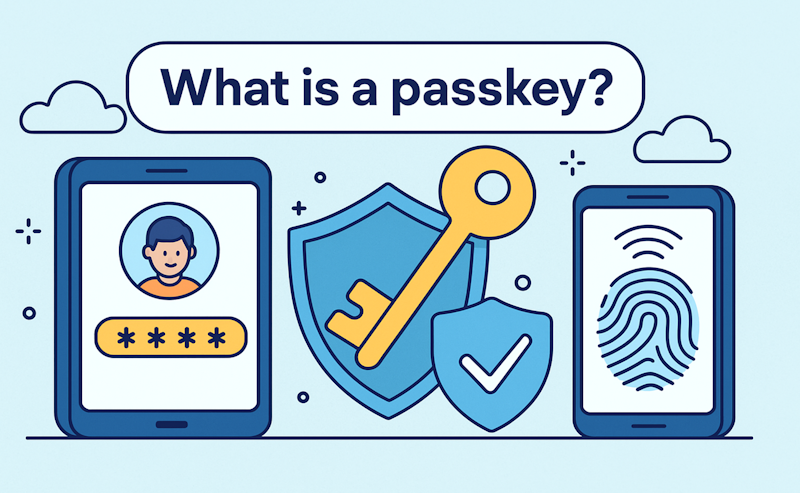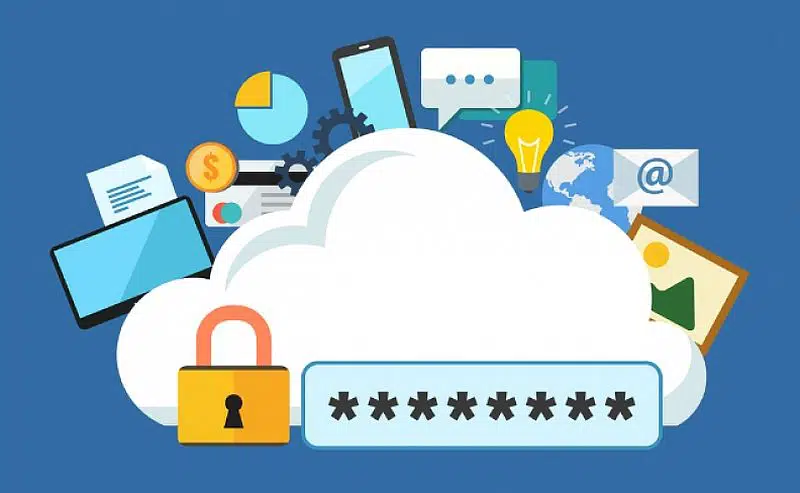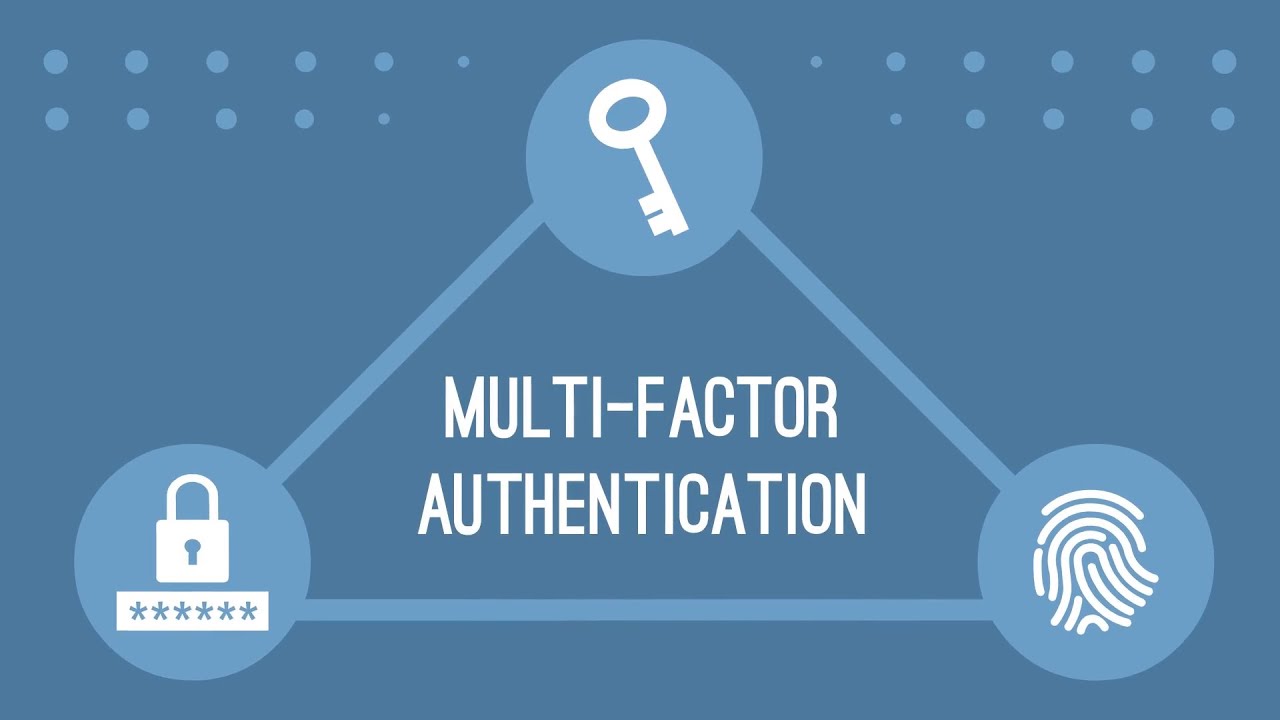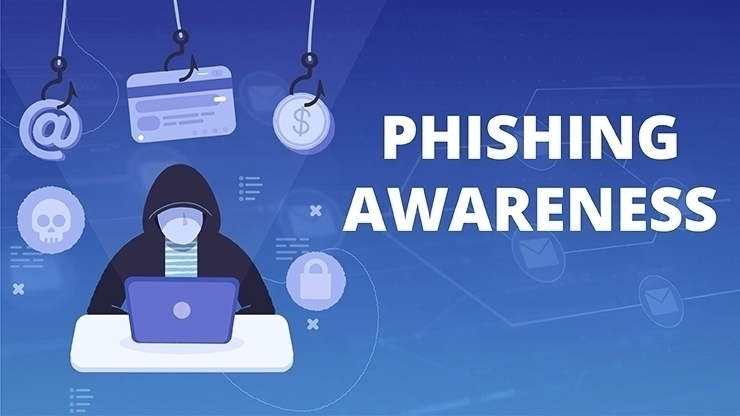Let’s be honest – how many times have you been prompted to set up a…

3.
Passkeys: Benefits, Why & How To Use
What is a Passkey?
Recently, you may have noticed something new when signing in to some of your favorite (or least-favorite) websites: a prompt to sign in with a passkey instead of a password. But what is a passkey? How is it different from a password, and why are many websites encouraging their customers to switch to them?
How do Passkeys work?
Passkeys are a new and different way of authenticating with websites and other services. When you create a passkey, you are actually doing two things:
- Creating a private cryptographic key, which is saved to your phone, computer, or cloud-based vault. This private key is kept secure and is sectioned off in a vault from the rest of your device, often using a PIN or biometrics (such as your face or fingerprint) for authentication, so that only you can access it.
- Creating a public key, which is saved to the database of the website or service you’re logging into.
How are Passkeys different from Passwords?
So how is a passkey different from a password? Most importantly, a passkey is a cryptographic key, whereas a password is a string of letters, numbers, and symbols. This makes passkeys more efficient and secure for a number of reasons:
- You won’t need to worry about length, complexity, or creating a unique passkey for each website.
- You won’t need to worry about remembering your passkey – you’ll just need to authenticate with the device it’s stored on using your face, fingerprint, or PIN.
- Your passkey can’t be stolen in a data breach like a password can. Even if a hacker stole all the public keys on a website, he couldn’t get your private key that way. The public keys are of limited use to a hacker.
- A passkey can’t easily be “phished.” Phishing is when a hacker steals your password by tricking you into either giving it to him or entering it into a fake website. This is much more difficult with passkeys. Passkeys can’t just be copy-and-pasted, and they are not actually sent to the website when you’re logging in.
How do I setup a Passkey?
The easiest way to set up a passkey for a website or service is to go to the “Account” or “Security” section of the website’s settings page. Look for an option for creating a passkey
and follow the directions on the website. It will prompt you to either use your Windows 11 computer, or another storage location such as the Microsoft Authenticator app on your phone, to store the private key.
Then, the next time you go to log in to the website, look for the option “Use a passkey” or “Log in with a passkey.” It will prompt you to use your PIN or biometrics on your computer or on your phone. (If you’re on your computer but your passkey is on your phone, you may also need to scan a QR code.) And that’s it! No typing in passwords needed.
Where can I use a Passkey?
Not all websites and services support passkeys yet – but more and more are adopting them, so keep an eye out! Whenever you have the opportunity to use a passkey instead of a password, it is a great idea to do so. At Colletti Tech, our job is to help you keep up with the latest advances in security technology to make sure that your logins and information are secure!
Ready to simplify and secure your business?
Passkeys are the future of authentication—faster, safer, and more convenient than passwords. At Colletti Tech, we help businesses adopt cutting-edge security solutions that protect data while streamlining user access. Whether you’re ready to roll out passkeys today or simply exploring the best options for your organization, our team is here to guide you every step of the way.
Let’s talk about how passkeys can strengthen your security and improve your workflow. Contact us today to get started.



